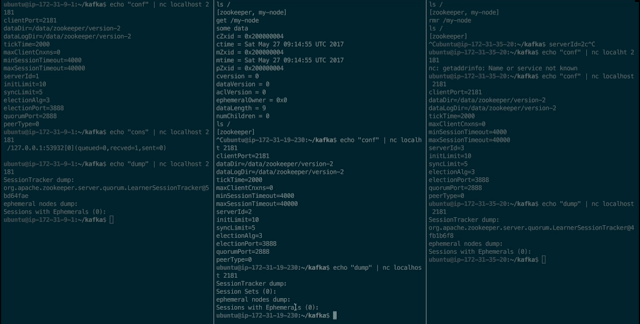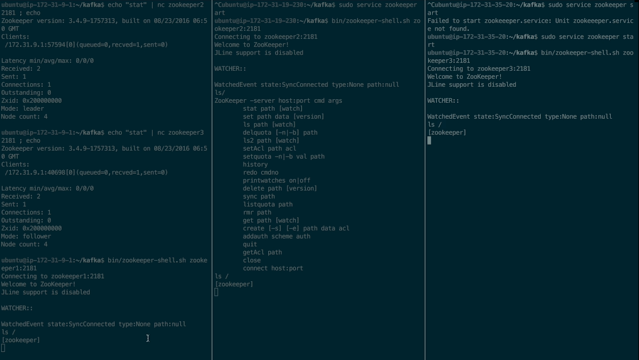1. Start machine with Ubuntu
2. Install Docker and required packages
3. Open up ports
4. Try a Docker hello world
#!/bin/bash
sudo apt-get update
# Install packages to allow apt to use a repository over HTTPS:
sudo apt-get install -y \
apt-transport-https \
ca-certificates \
curl \
software-properties-common
# Add Docker’s official GPG key:
curl -fsSL https://download.docker.com/linux/ubuntu/gpg | sudo apt-key add -
# set up the stable repository.
sudo add-apt-repository \
"deb [arch=amd64] https://download.docker.com/linux/ubuntu \
$(lsb_release -cs) \
stable"
# install docker
sudo apt-get update
sudo apt-get install -y docker-ce docker-compose
# give ubuntu permissions to execute docker
sudo usermod -aG docker $(whoami)
# log out
exit
# log back in
# make sure docker is working
docker run hello-world
# Add hosts entries (mocking DNS) - put relevant IPs here
echo "172.31.9.1 kafka1
172.31.9.1 zookeeper1
172.31.19.230 kafka2
172.31.19.230 zookeeper2
172.31.35.20 kafka3
172.31.35.20 zookeeper3" | sudo tee --append /etc/hosts








